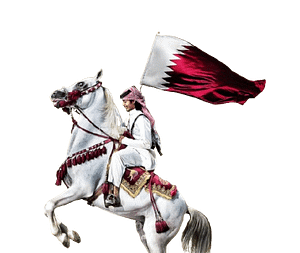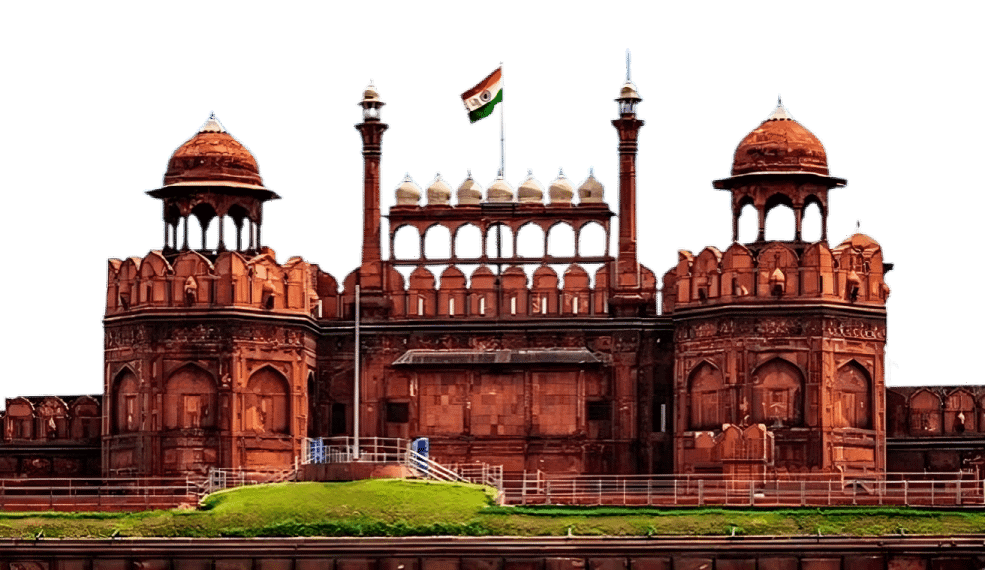Qatar Capital of Doha Qatari Riyal Arabic Introduction

Qatar:- Nestled on the northeastern coast of the Arabian Peninsula, Qatar is one of the wealthiest and most geopolitically strategic nations in the world. From humble tribal origins and colonial struggles to becoming a modern-day hub of energy and diplomacy, the journey of Qatar is one of resilience, ambition, and transformation.
Geographical and Demographic Profile
Qatar occupies a small peninsula that juts out into the Persian Gulf. Its total area is approximately 11,581 square kilometers. Despite its size, Qatar is rich in natural resources, especially natural gas and oil, which have fueled its rapid development.
As of 2024 estimates, Qatar’s population is around 2.9 million, with a significant portion comprising expatriates from South Asia, the Philippines, Egypt, and Western countries. Only about 10–15% of the population are native Qataris, with the rest being migrant workers and foreign professionals.
Qatar Ancient and Pre-Islamic History
Archaeological evidence suggests that human habitation in Qatar dates back to prehistoric times, with stone tools and campfire remnants found in sites like Al Da’asa. During the Bronze Age, Qatar was influenced by Dilmun civilization, which thrived in present-day Bahrain and parts of eastern Saudi Arabia.
In pre-Islamic times, the region was sparsely populated and primarily inhabited by Bedouin tribes who lived by fishing, pearling, and small-scale trade. The land was arid, with limited agriculture, but its strategic location near maritime trade routes gave it significance.
The Spread of Islam and Early Islamic Period
In the 7th century, Qatar became part of the expanding Islamic Caliphate. With the arrival of Islam, most tribes converted, and Qatar’s people began contributing to Islamic scholarship and commerce. During the Umayyad and Abbasid periods, Qatar remained under the broader rule of Islamic empires, serving as a maritime outpost.
Trade flourished during this era, particularly with India and Persia. The area remained under Islamic rule, including successive caliphates and regional Islamic states, for centuries.
Ottoman Influence and Regional Tensions (16th – 20th Century)
In the 16th century, the Portuguese briefly held control over Gulf trade routes, including parts of Qatar’s coast. However, they were soon displaced by the Ottoman Empire, which officially claimed Qatar as part of its territories in the mid-19th century.
Although the Ottomans nominally governed Qatar, their actual control was minimal, largely because of Qatar’s remote location and strong local tribal autonomy. The Al Thani family—Qatar’s current ruling dynasty—rose to prominence during this period. Sheikh Mohammed bin Thani is considered the founder of modern Qatar and solidified his authority by aligning with the Ottoman Empire.
The Ottomans maintained a garrison in Qatar until World War I, but local leadership, especially the Al Thani family, retained most of the real power.
British Protectorate and Struggles for Autonomy (1916–1971)
British Involvement
The late 19th and early 20th centuries saw growing British influence in the Gulf. Britain sought to control maritime trade routes and maintain peace for its commercial interests in India. In 1916, after tensions with the Ottomans and internal tribal conflicts, Qatar signed a treaty with the British, becoming a British protectorate.
Under this treaty:
- Qatar agreed not to enter foreign relations without British consent.
- Britain offered protection from external threats.
- The Al Thani rulers retained internal governance.
This treaty was renewed and modified several times, notably in 1935, solidifying Qatar’s status under British protection. However, unlike direct colonies like India, Qatar remained semi-autonomous in domestic affairs.
Discovery of Oil and Transformation
The most transformative moment in Qatar’s history occurred in the 1930s, with the discovery of oil. After a slow start due to World War II and limited infrastructure, commercial oil production began in the 1950s.
The discovery of oil brought:
- Wealth to the ruling elite.
- Infrastructure development (roads, hospitals, education).
- A shift from a pearling and fishing economy to oil and later natural gas.
Oil royalties allowed the Al Thani family to consolidate power, modernize the country, and improve living standards. It also created tensions between the government and tribal factions who demanded a share in the wealth.
Path to Independence
During the 1950s and 1960s, nationalism was rising across the Arab world. Many Gulf countries, inspired by decolonization, began to seek full independence. The British government, facing its own economic and political changes, announced in 1968 that it would withdraw from “East of Suez,” including the Persian Gulf, by 1971.
Initially, Qatar explored forming a federation with Bahrain and the seven emirates that later became the UAE. However, disagreements over leadership and sovereignty led Qatar to withdraw from the plan.
Independence Declaration – 3 September 1971
On September 3, 1971, Qatar officially declared independence, ending the treaty relationship with Britain. Sheikh Khalifa bin Hamad Al Thani, who had taken over from his cousin, became the Emir and initiated reforms to strengthen the state’s foundations.
The newly independent Qatar:
- Joined the United Nations and the Arab League.
- Maintained a pro-Western foreign policy.
- Focused on internal development, health, education, and urbanization.
Modernization and Political Developments
The Rule of Sheikh Hamad bin Khalifa Al Thani (1995–2013)
In 1995, Sheikh Hamad bin Khalifa Al Thani seized power from his father in a peaceful coup. His rule marked a turning point:
- Massive investments in education, infrastructure, and healthcare.
- Creation of Al Jazeera, Qatar’s influential global news channel in 1996.
- Launch of Qatar Airways, which became a global airline.
- Bid and successful hosting of international events, including the 2022 FIFA World Cup.
Sheikh Hamad also played a major role in:
- Developing LNG (liquefied natural gas) industry, making Qatar the world’s top LNG exporter.
- Improving foreign relations with both Western and regional powers.
- Promoting liberalization (though still limited) through the 2003 Constitution, which allowed for legislative bodies.
Sheikh Tamim bin Hamad Al Thani’s Era (2013–Present)
In 2013, Sheikh Hamad voluntarily abdicated in favor of his son, Sheikh Tamim bin Hamad Al Thani. Under his leadership, Qatar has focused on:
- Diversifying its economy through the National Vision 2030 plan.
- Promoting sustainability and education.
- Maintaining international mediation roles in global conflicts.
- Successfully hosting the 2022 FIFA World Cup, the first Arab country to do so.
Despite facing a major regional crisis in 2017, when neighboring countries (Saudi Arabia, UAE, Bahrain, Egypt) imposed a blockade accusing Qatar of supporting terrorism, Qatar remained resilient. It:
- Developed new trade routes via Iran and Turkey.
- Boosted food self-sufficiency.
- Strengthened defense and foreign ties, especially with Turkey and the US.
The blockade ended in 2021, with the Al-Ula Agreement, restoring diplomatic relations.
Political Structure and Governance
Qatar is an absolute monarchy, with the Emir as the head of state and government. The Al Thani family has ruled since the mid-1800s.
Key features:
- Shura Council: Partially elected advisory body.
- Legal System: Based on Sharia (Islamic law) with civil elements.
- No political parties, but limited space for civic engagement.
While the state emphasizes Islamic values, it has adopted modern institutions, making it one of the most progressive Gulf nations in terms of media, education, and sports.
Economic Landscape
Qatar has transformed into a global economic powerhouse, with:
- GDP per capita among the highest in the world.
- Proven natural gas reserves of over 24 trillion cubic meters.
- Major investments in real estate, aviation, and foreign assets via the Qatar Investment Authority (QIA).
Key sectors:
- Natural gas and oil: Over 50% of GDP.
- Banking and finance: Global partnerships and Islamic banking.
- Construction and infrastructure: Driven by World Cup and Vision 2030.
The country is actively promoting tourism, research, and green energy to reduce reliance on fossil fuels.
Social and Cultural Fabric
Qatar blends Islamic traditions with cosmopolitan influences. Its cultural revival includes:
- Establishment of Katara Cultural Village, Museum of Islamic Art, and Qatar National Library.
- World-class universities like Georgetown, Carnegie Mellon, and Northwestern in Education City.
- Promotion of arts, sports, and global diplomacy.
However, it faces criticism over:
- Migrant worker rights, especially during World Cup construction.
- Restrictions on free speech and political dissent.
- Gender equality, though improving, still has limitations.
Global Influence and Diplomacy
Qatar punches above its weight in international affairs. It:
- Mediates in conflicts (Afghanistan, Lebanon, Palestine).
- Hosts major sports, cultural, and diplomatic summits.
- Maintains close relations with US, EU, China, and regional players.
- Hosts the largest US airbase in the Middle East — Al Udeid Air Base.
Population and Area Recap
- Population (2024): Approx. 2.9 million
- Area: 11,581 square kilometers
Only about 300,000 are native Qataris. The rest are expatriates from:
- India, Nepal, Bangladesh, Pakistan
- Egypt, Philippines, Sri Lanka, and Western nations
Despite its tiny size, Qatar is a global diplomatic and energy powerhouse.
Conclusion
Qatar’s journey from a tribal pearling community to a sovereign, modern, and influential global state is nothing short of remarkable. While its wealth in energy resources has provided it with the means for rapid development, its visionary leadership, global diplomacy, and strategic geographic position have made it a key player on the world stage.
As it looks toward the future with its Qatar National Vision 2030, the nation is determined to evolve beyond hydrocarbons, investing in sustainability, innovation, and global connectivity. From the deserts of antiquity to the glimmering skyscrapers of Doha, Qatar stands today as a unique story of ambition, culture, and national pride.



